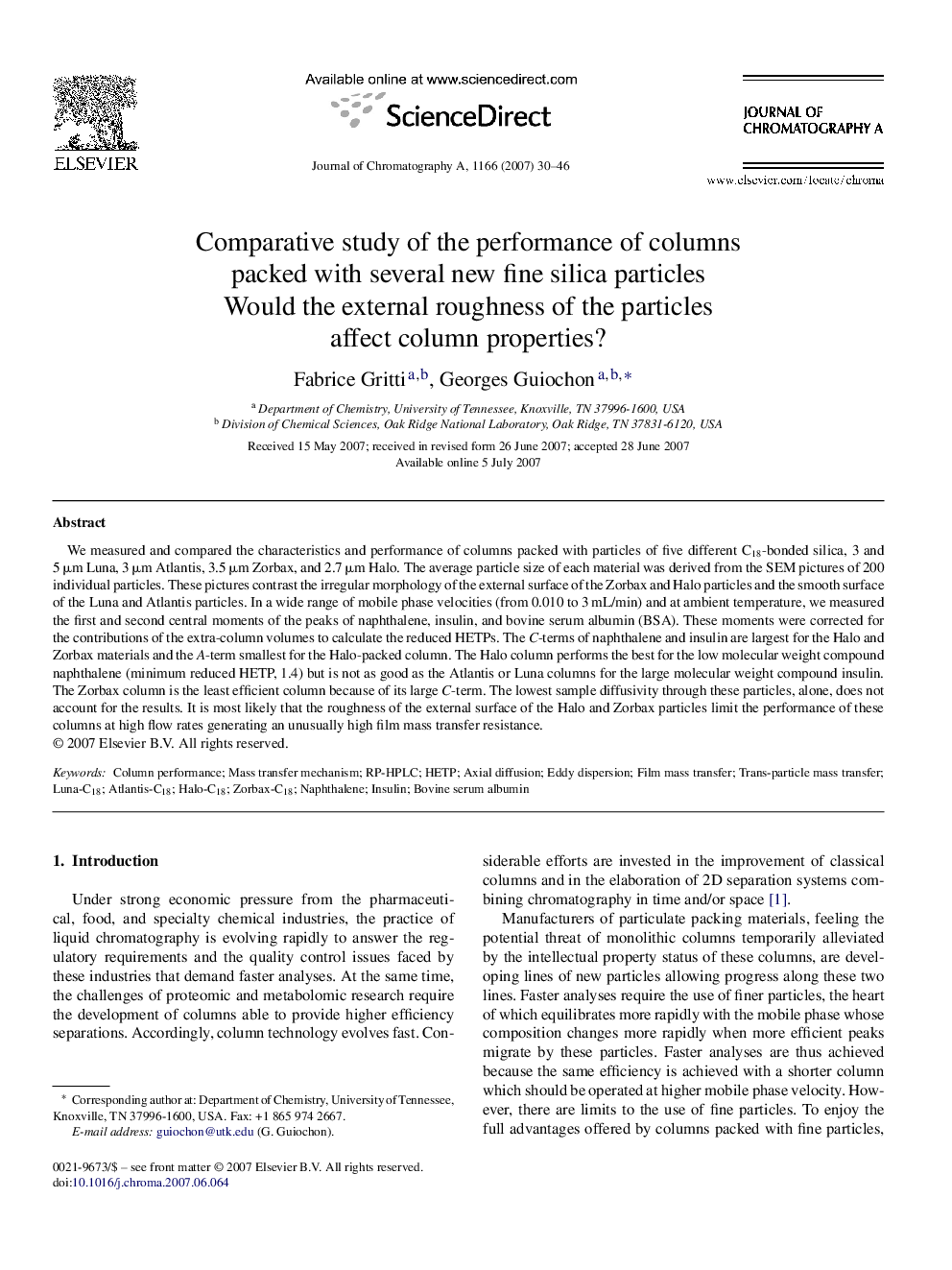| Article ID | Journal | Published Year | Pages | File Type |
|---|---|---|---|---|
| 1206573 | Journal of Chromatography A | 2007 | 17 Pages |
We measured and compared the characteristics and performance of columns packed with particles of five different C18-bonded silica, 3 and 5 μm Luna, 3 μm Atlantis, 3.5 μm Zorbax, and 2.7 μm Halo. The average particle size of each material was derived from the SEM pictures of 200 individual particles. These pictures contrast the irregular morphology of the external surface of the Zorbax and Halo particles and the smooth surface of the Luna and Atlantis particles. In a wide range of mobile phase velocities (from 0.010 to 3 mL/min) and at ambient temperature, we measured the first and second central moments of the peaks of naphthalene, insulin, and bovine serum albumin (BSA). These moments were corrected for the contributions of the extra-column volumes to calculate the reduced HETPs. The C-terms of naphthalene and insulin are largest for the Halo and Zorbax materials and the A-term smallest for the Halo-packed column. The Halo column performs the best for the low molecular weight compound naphthalene (minimum reduced HETP, 1.4) but is not as good as the Atlantis or Luna columns for the large molecular weight compound insulin. The Zorbax column is the least efficient column because of its large C-term. The lowest sample diffusivity through these particles, alone, does not account for the results. It is most likely that the roughness of the external surface of the Halo and Zorbax particles limit the performance of these columns at high flow rates generating an unusually high film mass transfer resistance.
